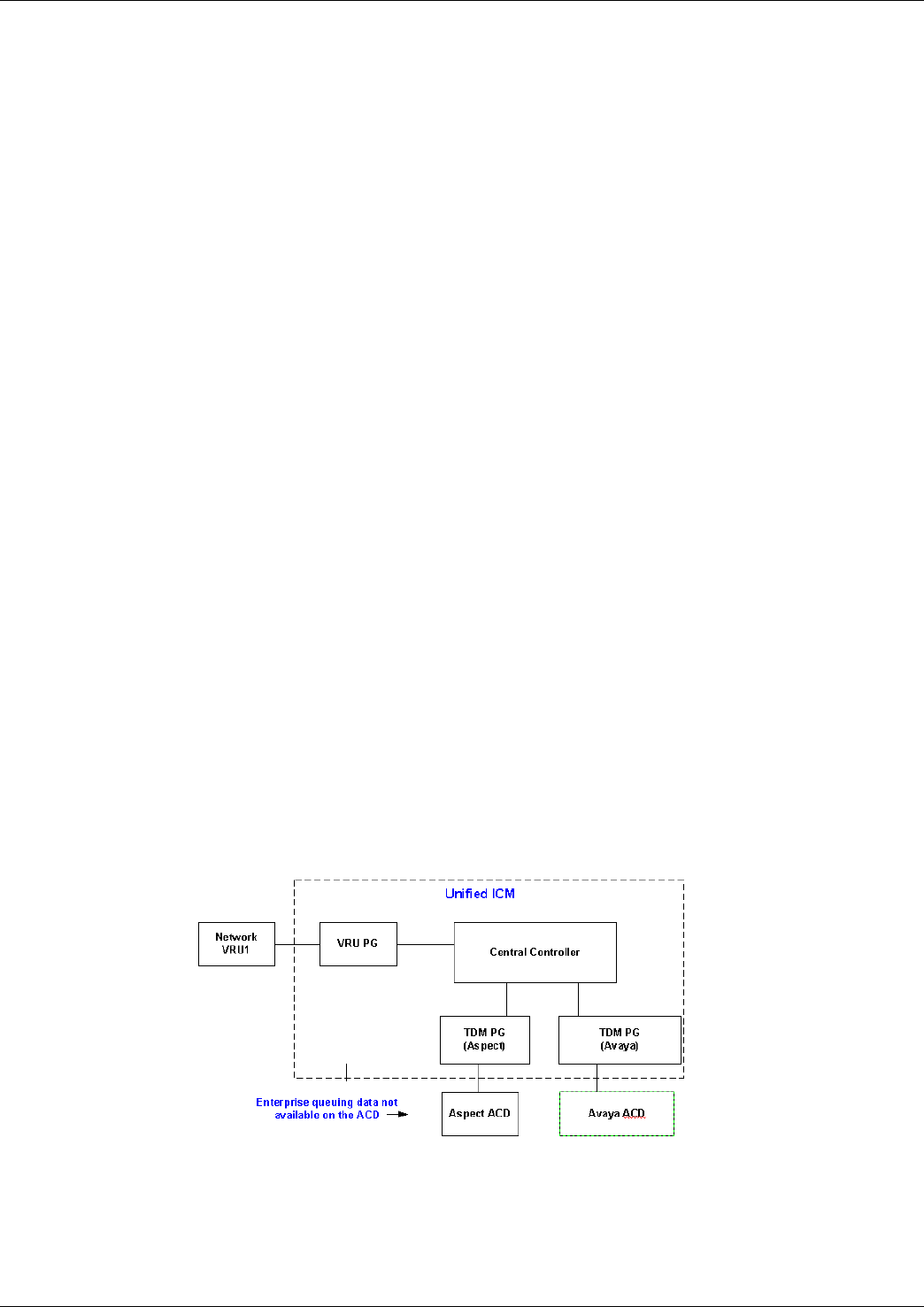User Guide
Table Of Contents
- Cover Page
- Table of Contents
- List of Figures
- Figure 1 : Central Controller
- Figure 2 : Peripheral and Peripheral Gateway
- Figure 3 : Administrative Workstation
- Figure 4 : WebView Server
- Figure 5 : Diagram of System Components
- Figure 6 : ICM Data Environment
- Figure 7 : Real-Time Data Moves to AW Local Database
- Figure 8 : Icons for Graphs and Tables
- Figure 9 : Deployment with Enterprise Routing
- Figure 10 : Sample Script for Enterprise Routing
- Figure 11 : Script Example for Agent Level Routing
- Figure 12 : Sample Script for Hybrid Routing
- Figure 13 : Agent State and Task State Relationship
- Figure 14 : Sample Routing Script for Information Gathering and Queuing
- Figure 15 : Call Type Data for Calls that Abandon after Call Type is Changed
- Figure 16 : Call Type Data for Calls that Abandon before Call Type is Changed
- Figure 17 : MultiChannel Options
- Figure 18 : Agent State Hierarchy
- Figure 19 : Call Abandoned While On Hold Scenario
- Preface
- Chapter 1: System Architecture and Reporting
- Chapter 2: Understanding Reporting
- Chapter 3: Understanding Routing and Queuing
- Chapter 4: Planning for Reporting
- Planning for Reporting at Unified ICM Setup
- Planning for Your Deployment
- Planning for Configuration and Scripting
- Planning for Agent Reporting
- Planning for Call Types
- Planning for Custom Reporting
- Planning for the HDS
- Planning for Enterprise Routing and Enterprise Reporting
- Planning for Service and Enterprise Service Reporting
- Planning for Service Level
- Planning for Short Calls
- Planning for Skill Groups and Enterprise Skill Groups
- Planning for Transfer and Conference Reporting
- Planning for Translation Routing
- Planning for Unexpected Scripting Conditions
- Planning for VRU Application Reporting
- Chapter 5: Reporting on Agents
- What Agent Data do you Want to See?
- Reporting on Agent Activity in Skill Groups
- Reporting on Agent States
- Reporting on Average Speed of Answer for Agents and Skill Groups
- Reporting on Agent Logout Reason Codes
- Reporting on Agent Not Ready Reason Codes
- Reporting on Agent Task Handling
- Reporting on Agent Performance for Outbound Option Dialing Campaign Calls
- Reporting on Agent Redirection on No Answer
- Reporting on Agent Call Transfers and Conferences
- Reporting on Agent Teams
- Chapter 6: Reporting on Customer Experience
- Chapter 7: Reporting on Operations
- Chapter 8: Reporting in a MultiChannel Environment
- Chapter 9: Sample Call Scenario
- Chapter 10: Reporting Implications of Data Loss and Component Failover
- Chapter 11: Troubleshooting Report Data
- Appendix A: List of All Unified ICM Report Templates
- Appendix B: Reporting Entities and Databases
- Appendix C: Configuration and Scripting for Reporting
- Configuration for Agent Reporting
- Configuring Call Types
- Configuration and Scripting for Conferences and Transfers
- Configuring Services and Enterprise Services
- Configuring and Scripting for Service Level Threshold and Type
- Configuring Short Calls
- Configuring Skill Groups and Enterprise Skill Groups
- Configuration and Scripting for the VRU
- Configuring Translation Routes
- Index

The ICM System can be deployed with different types of Peripheral Gateways to meet the call
center needs in your enterprise.
•
Deployments with Enterprise Routing (page 43)
•
Deployments with Agent Level Routing (page 49)
•
Deployments with Hybrid Routing (page 53)
Deployments with Enterprise Routing
In this deployment, the Unified ICM system is configured with Peripheral Gateways (PGs) that
can connect to legacy ACDs using any of the supported TDM PGs (Aspect, Avaya and so forth)
as well as the Unified CC Gateway PGs.
When the Unified ICM software is configured with these types of PGs, the call treatment and
queuing (ACD queuing) is provided by the ACD. That is, it is the ACD that controls the queuing
and chooses the agent required to handle the call.
The Unified ICM software is primarily used for intelligent call routing to sites and consolidated
reporting for these ACDs. Optionally the Unified ICM software can be used to provide initial
call treatment and/or enterprise queuing (Enterprise queue). In this case the call is routed to a
site when an agent becomes available.
The ACD offers the call to agents based on skill definitions on the ACD. If an agent is not
available, the ACD queues the call (in the ACD queue) and then directs the call when an agent
becomes available.
This illustration shows the Unified ICM system connected to two PGs for legacy ACDs and to
a network VRU.
Figure 9: Deployment with Enterprise Routing
•
When calls are routed to an ACD, call treatment is provided on the ACD and the ACD controls
the queuing.
Reporting Guide for Cisco Unified ICM Enterprise & Hosted Release 7.2(1)
43
Chapter 3: Understanding Routing and Queuing
Deployments with Enterprise Routing










